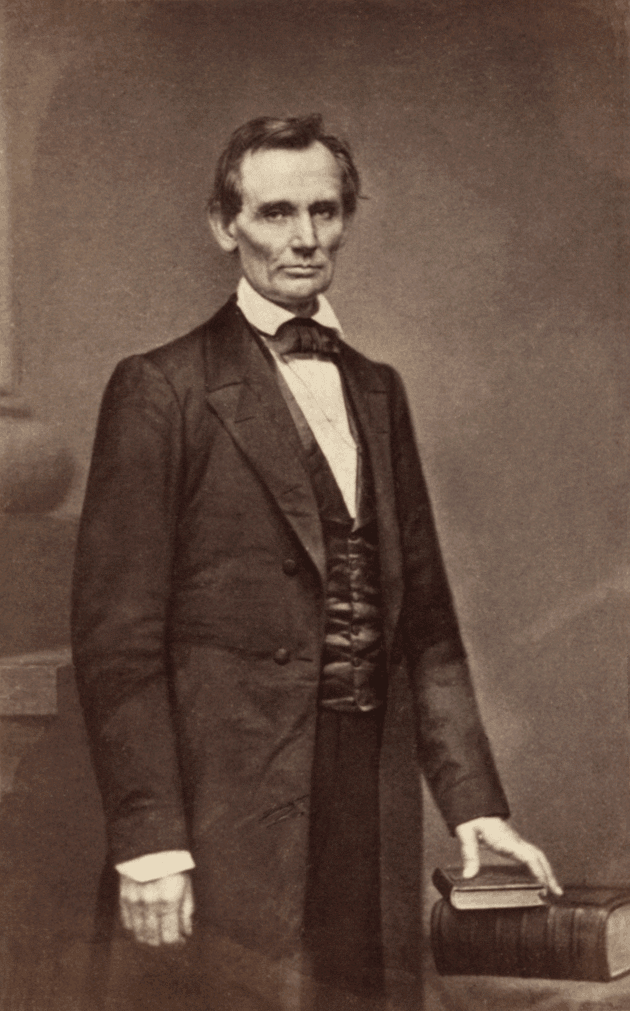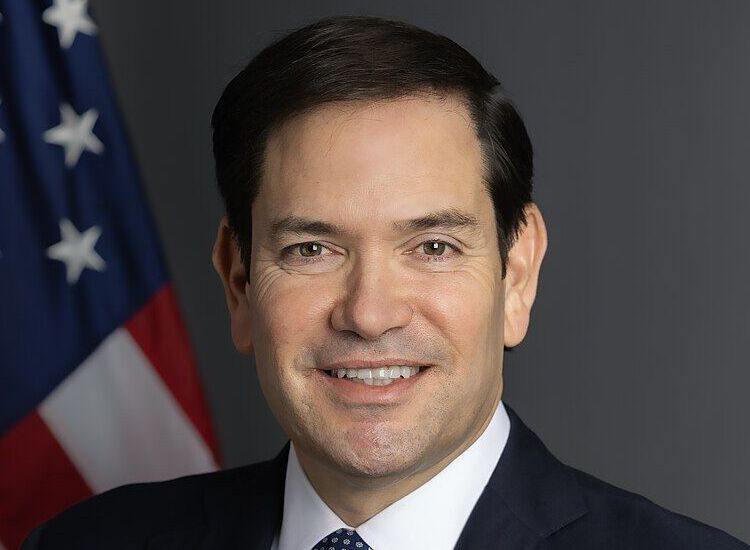Editorialists, teachers, clergymen and politicians from the post-Civil War era onwards loved their Abraham Lincoln quotes.
A favorite was: “You can fool some of the people all of the time, and all of the people some of the time, but you cannot fool all of the people all of the time.”
There is no evidence that he ever said that one, however.
Would the 16th president, in any case, have bought into so reassuring a message? A man who said that government couldn’t endure “half-free and half-slave” might have worried if some of the people were being fooled some or all of the time.
If, for instance, only some of the people believe that elections are stolen – because they’ve been told – then it undermines the very basis of the system, which is rule by consent. That de-legitimation of the process as much as the accompanying violent rhetoric is what led to the events of Jan. 6, 2021.
Lincoln has always had a fairly broad appeal. Old Abe would likely win a popularity contest today in America against Vladimir Putin, by about 57 percent to 43 percent.
The young leftwing idealists who went off to fight the losing battle for Spanish democracy in the late 1930s did so under the banner of Abraham Lincoln Brigade, while today a well-known manifestation of Republican and ex-Republican never-Trumpism is the political action committee called the Lincoln Project.
Former Democratic operative and now commentator James Carville said of the content produced by the Lincoln Project (see it on YouTube): “The Democrats could learn a lot from them. They're mean. They fight hard. And we don't fight like that.”
Some U.S. conservatives fight hard in another way. Many right-leaning intellectuals have no inhibitions whatsoever about using an argument they don’t believe in themselves, if it impresses some of their followers and it gets under the skin of liberals.
I remembered one such argument from the last decade when an online reader emailed me objecting to a throwaway line of mine in one of the recent pieces the paper did about the family roots of the Harris/Walz ticket.
“The absurdity of claiming the American Christian Conservative movement came from the South is a pathetic proof of ignorance,” said the email correspondent I’ll call Jack. “The racism of the South came from the Dixie-crats, the Left. It was the Right that fought to free the African Americans from Slavery (Republican Abraham Lincoln) and from the Jim Crow Laws of the Southern Left.”
Jack was on slightly stronger ground when he added, “Conservative Christianity came from Missouri and California (Assemblies of God, Foursquare, Vineyard, Calvary Chapel and more).”
Actually, the western edge of Missouri was a bastion of slavery and the state has historically been considered part of the Bible Belt; but fair enough, I don’t mind being called to account if the argument seems overly reductive.
But the position that pits the Lincoln “Right” against the white Southern “Left” stretches the limits of basic logic and fact.
And it broke those limits when former Ronald Reagan aide and Donald Trump enthusiast Jeffrey Lord said during CNN coverage of the 2016 DNC, “I’ve never understood why after 176 years of writing political platforms the Democratic Party doesn’t simply say, ‘We were responsible for slavery and segregation. We apologize. Let’s name the injustice — we were responsible for creating this culture of race in this country and we’re sorry.’ I mean, I just don’t understand what’s wrong with that.”
On another occasion that year, he said to prominent Black Democrat Van Jones, who’d criticized Trump for not disavowing the support of former Ku Klux Klan leader David Duke, that that organization “were the military arm, the terrorist arm of the Democratic Party, according to historians. For God’s sake, read your history.”
Political parties are not living organisms, though. They are first of all labels; and secondly, they are umbrellas for shifting coalitions of various interests groups and voting blocs.
Urban Catholics were once identified with the Democratic Party, and in the half century up through 1960, the Irish played a disproportionately large role in running the party. Neither phenomenon is evident today.
One can, of course, identify certain continuities in terms of ideology — the Republicans were the party of free enterprise and businessmen and the Democrats the party of the common people, except in the South where they were the party of all of the whites and the Blacks couldn’t vote, for the most part.
Many American Blacks identified with the Republican party of Lincoln. Pols of both parties in the North were supportive of civil rights in the South, particularly if they were from the more liberal, progressive or, dare I say it, left wing of their party.
From the 1960s on, the Washington Post’s Janell Ross commented in the context of the Lord/Jones CNN discussion, the descendants of KKK members “moved to the modern-day Republican Party as the Democratic Party and its establishment made the decision to become a progressive party, advancing the full social, political and economic inclusion of non-white Americans.”
Here are a few highlights and lowlights of that long process —
* In the 1948 presidential election, hardline segregationist Democratic South Carolina Governor Strom Thurmond challenged his party’s White House incumbent Harry S. Truman (the Missourian grandson of slave-owners) on a Democratic States’ Rights Party third-party ticket, aka the Dixiecrats.
Texas Democrat Sam Rayburn, the future speaker of the House of Representatives, said at a Truman strategy meeting that when the Dixiecrats made their supposedly noble demand for States’ Rights, he heard only the complaint: “N*****, n*****, n*****.”
Thurmond carried four states.
* In the 1950s, President Eisenhower became the first Republican to make a serious pitch for Southern white votes.
* After President Kennedy framed the issue of civil rights as a “moral” one in the last summer of his life, his approval rating went down overnight from 70 percent to 55 percent.
* The Republican presidential candidate Barry Goldwater lost in a landslide to LBJ in 1964, but he made inroads in the South with an anti-civil rights message.
* That same year, the most famous Dixiecrat of them all, Thurmond, now a U.S. senator, became a Republican, and would remain so until he retired in January 2003 at age 100.
* In faraway Virginia, another hardline segregationist Democratic Senator Absalom Willis Robertson didn’t feel the need to switch ahead of his 1966 retirement after 33 years in Congress. His son, though, the televangelist Pat Robertson would switch and become a major Republican player from the 1980s onwards.
A compelling account of how the solidly Democratic South became over time the solidly Republican South is found in “Nut Country: Right-Wing Dallas and the Birth of the Southern Strategy,” by Edward H. Miller, a professor of history at Northwestern University.
In his narrative, the ideological interplay between ultraconservative and moderate conservative Republican factions helped a minority party emerge as the majority, not just in the state but the whole region
Businessman Peter O’Donnell, described as the son of a “well-to-do cotton broker” and a graduate of the University of Pennsylvania’s Wharton School of Business, was perhaps the key Dallas strategist behind the “reinventing” of the GOP.
Writes Miller, “In the late 1950s, the vast majority of Southerners loathed the Republican Party because of its historical legacy as the party of Lincoln. Southerners still wanted no part of a party that had been established in 1854 for the purpose of promoting non-slave labor and stopping the spread of slavery into the American West.”
Miller adds that, “Peter O’Donnell embodied a new brand of smart and savvy political leadership in the postwar New South. As journalist Theodore White put it, this new generation was made up of ‘men between 30 and 40 years old, city people, well-bred, moderate segregationists, efficient, more at ease at suburban cocktail parties than when whiskey-belting in the courthouse chambers.’
“O’Donnell became convinced in the late 1950s that the Republican Party needed to identify itself as the anti-civil rights party in the South,” and that “rebranding the GOP was possible.”
Miller says, “While certainly no racist himself, he helped steer the party in the direction that would win elections by appealing to untapped white resentment, starting with the Dallas Republican Party, then moving on to the Texas Republican Party and, finally, the national Republican Party. The new GOP would champion issues dear to both fiscal conservatives and segregationists: states’ rights, lower taxes, and less government regulation.”
In those years, the Dallas precedent, paving the way for the Goldwater run, showed that the Republicans could finally learn to “whistle Dixie.”
Ronald Reagan’s chief strategist in the South, Lee Atwater, admitted to teaching his boss how to whistle Dixie.
During the 1980 presidential campaign, Reagan endorsed the concept of “States’ Rights” at the Neshoba County Fair in Mississippi, close to the site of the murder of three civil rights workers in 1964. Historian David Greenberg asked in a 2007 New York Times essay, “Was this language, in this place, an endorsement of the white South’s wish to reverse the 20-year-old trend of using federal laws (and troops when necessary) to protect the rights of African-Americans? Or was Reagan’s remark just an expression of his well-known disdain for ‘big government’ — and his choice of Neshoba County an unhappy blunder? In the ambiguity lies the answer.”










